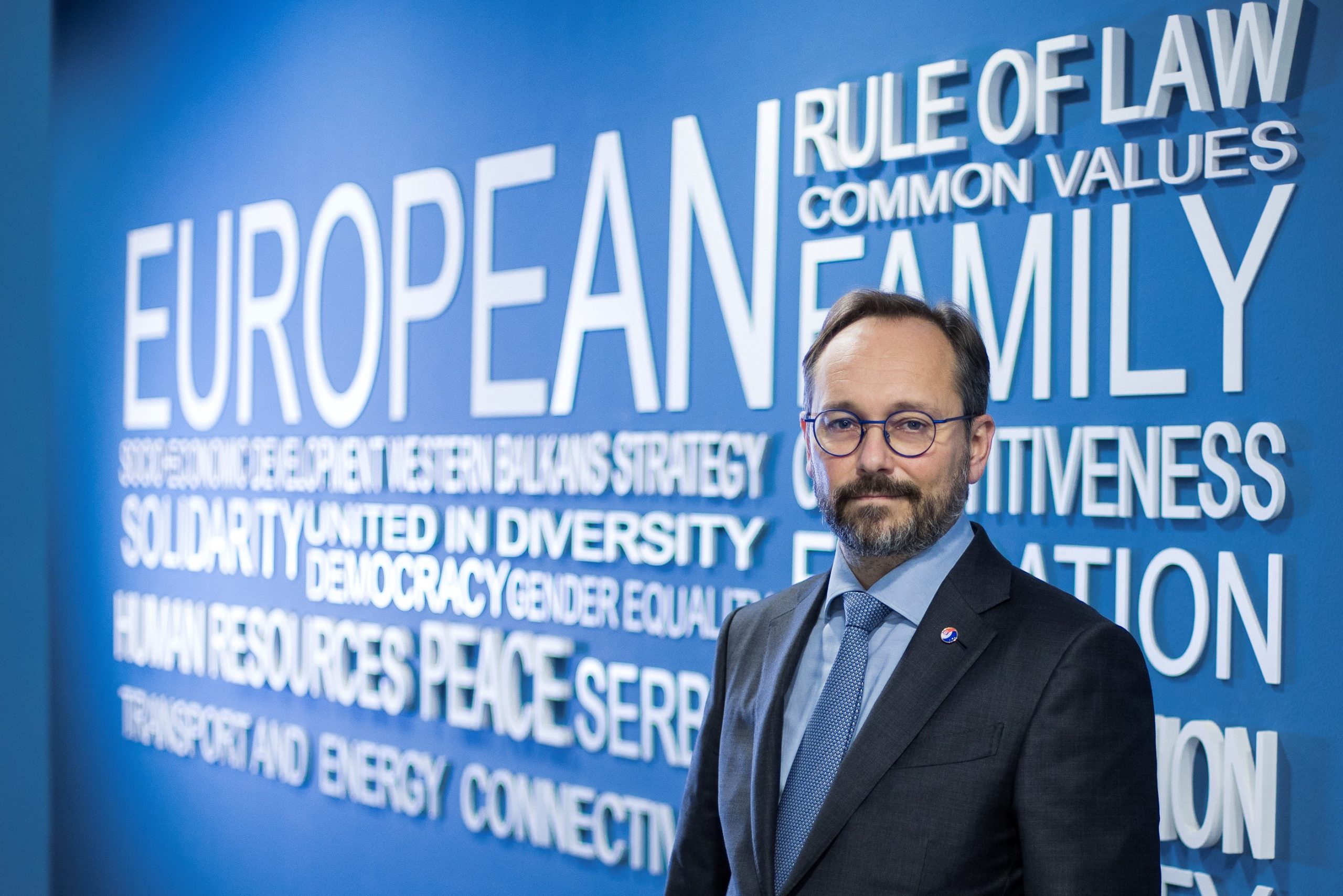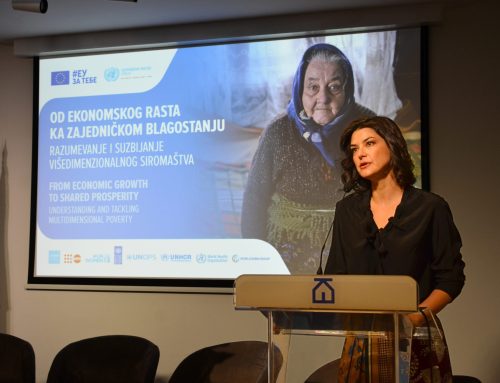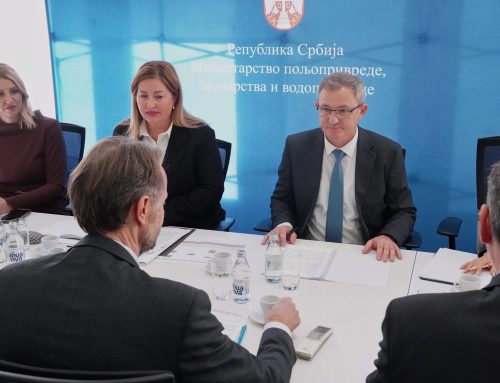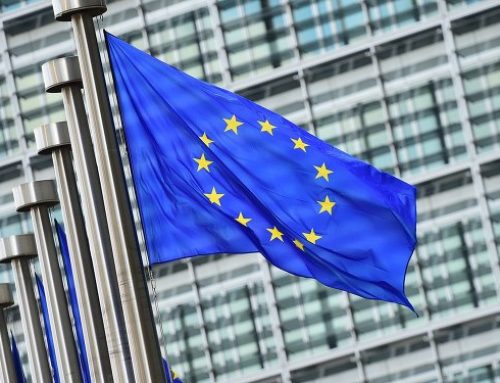Blog – Emanuele Giaufret, EU Ambassador to Serbia
The year 2022 started with optimism for environmental protection in Serbia following the opening in December 2021 of the Cluster 4 for transport, energy, trans-European networks and environment and climate. In practice, the opening of negotiations in a cluster of chapters means that the substantial negotiations can start in these areas.
This also means that continued substantial efforts by Serbia are needed to fulfil the necessary conditions to close those chapters. We often notice a big focus on the opening of clusters or chapters but closing chapters is a key element to the conclusion of accession negotiations as a whole.
There is equally a lot of work ahead when it comes to climate action.
While the heated debates of the Glasgow climate conference (COP26) back last year have cooled down, our climate keeps heating up. A lot is at stake.
The world’s chance of holding global temperature increase to 1.5C above pre-industrial levels is very thin. Climate change is not an abstract idea. The ravages of climate breakdown could become catastrophic, and some are already irreversible.
COP26 gave us hope and confidence that we can provide a safe and prosperous space for humanity on this planet. But there is no time to relax: there is still hard work ahead.
Russia’s aggression on Ukraine also demonstrated the need for Europe and the readiness of the European Union to further reduce its dependency to Russian fossil fuels. This can also give an extra push to cut carbon emissions and have a positive impact on the fight against climate change.
Zooming in to Serbia
At COP26, Serbia expressed a valid concern about the financing for a green transition, safeguarding energy security and supporting workers to switch to green jobs and industries.
The good news is that the financing is there. However, for “green financing” to make sense, it is necessary to increase climate ambition. The climate ambition of each country is reflected in nationally determined contributions (NDCs), which are plans containing targets on emissions cuts and adaptation, usually pegged to 2030, and information on how they will be met. Adoption of revised NDCs, which Serbia announced prior to the COP26 – is the best way to ensure access, not only to various environment and climate change global funds and bilateral grants, but also to favourable green loans and other borrowings.
Serbia’s robust economic growth and significant investments in infrastructure are evident. However, to maintain and bring new growth, deep decarbonisation and a green transformation is needed, particularly if we have in mind the country’s key export market – the EU, where consumers are already favouring goods with a low carbon footprint.
Energy is of course a key sector in Serbia for the fight against climate change and holds the key to a climate neutral economy and society. Energy efficiency and renewable energy sources are the main vehicles for a clean energy transition. Increasing energy efficiency and using more renewable energy in the economy (including buildings, transport sector and industries) will not only create energy savings, but also reduce emissions and air pollution.
Currently Serbia spends three times more energy per GDP unit than the EU average. Increasing energy efficiency in public buildings by only 10% would remove the need for one older thermal power plant.Serbia could increase the efficient use of energy by renovating public and private buildings and by helping enterprises in Serbia spend less energy in their production process.
Adapting to new climate reality
In parallel, we need to start working together on adapting to an already changed climate. We know from several studies that Serbia and South Eastern Europe are in a region that is heating up faster than the global average. This means it will be strongly affected by climate change and children born today may well experience the dramatic effects of intensified floods, wildfires, droughts and harsh economic impacts. Farmers will lose incomes, infrastructure like roads and railways could be heavily affected. Through it all, the cost of not acting will be higher than the cost of acting.
Being highly vulnerable to the adverse impacts of climate change, Serbia could face $13 million in losses and damages by the end of this decade.
To have enough water supplies for food production and energy generation, Serbia needs more resilient types of crops, water storage systems (such as dams and water reservoirs), as well as drainage systems. Also, building wastewater treatment facilities would reduce organic pollution of watercourses and lakes and maintain their viability under increased temperatures and expected water shortages.
There are also numerous small-scale innovative solutions that are becoming increasingly affordable and easily deployable to help Serbian farmers to adapt. For example, Serbian scientists at the Institute Mihajlo Pupin have developed innovative technology to ensure resource-efficient and climate resilient farming for small and medium-sized farms.
The EU and UNDP encourage further investments into innovative technologies and businesses and the transfer of innovative technologies to Serbia – to reduce GHG emissions, strengthen community resilience to the impacts of climate change and create green jobs.
Financial infusion for green transformation
To kick-start the green transformation, the EU has prepared the Green Agenda for the Western Balkans, as part of theEU’s Economic Investment Plan for the Balkans. This Agenda tackles five broad areas covered by the Green Deal: decarbonisation, depollution of air, water and soil, circular economy, farming and food production, and protecting biodiversity. The Western Balkans economies have endorsed fully the Green Agenda, and also recently adopted its regional Action Plan in Brdo, Slovenia.
The EU for Green Agenda in Serbia, in cooperation with the Ministry of Environment, UNDP, Swedish SIDA and European Investment Bank (EIB),will help Serbia to improve policies, take concrete actions and scale-up investments for green transformation.It is an8 million euros program to abate air pollution, fight against biodiversity loss, support businesses to become more circular, etc.
Many people in Serbia have become increasingly concerned about the environment. The recent demonstrations organised in the country against for instance air pollution show that these issues are becoming increasingly important.
The EU has the strictest environmental legislation in the world. EEA reports show that when well enforced, EU legislation allows decreasing air pollution, providing clean water and decreasing emissions, while creating jobs and growth. We believe that a strict enforcement and full implementation of the respective EU legislation transposed in Serbian law will also help to improve environmental protection in Serbia.
In the long run it is simply smarter to go green. In parallel, it is the only way to go, for the people, the economy and the planet.
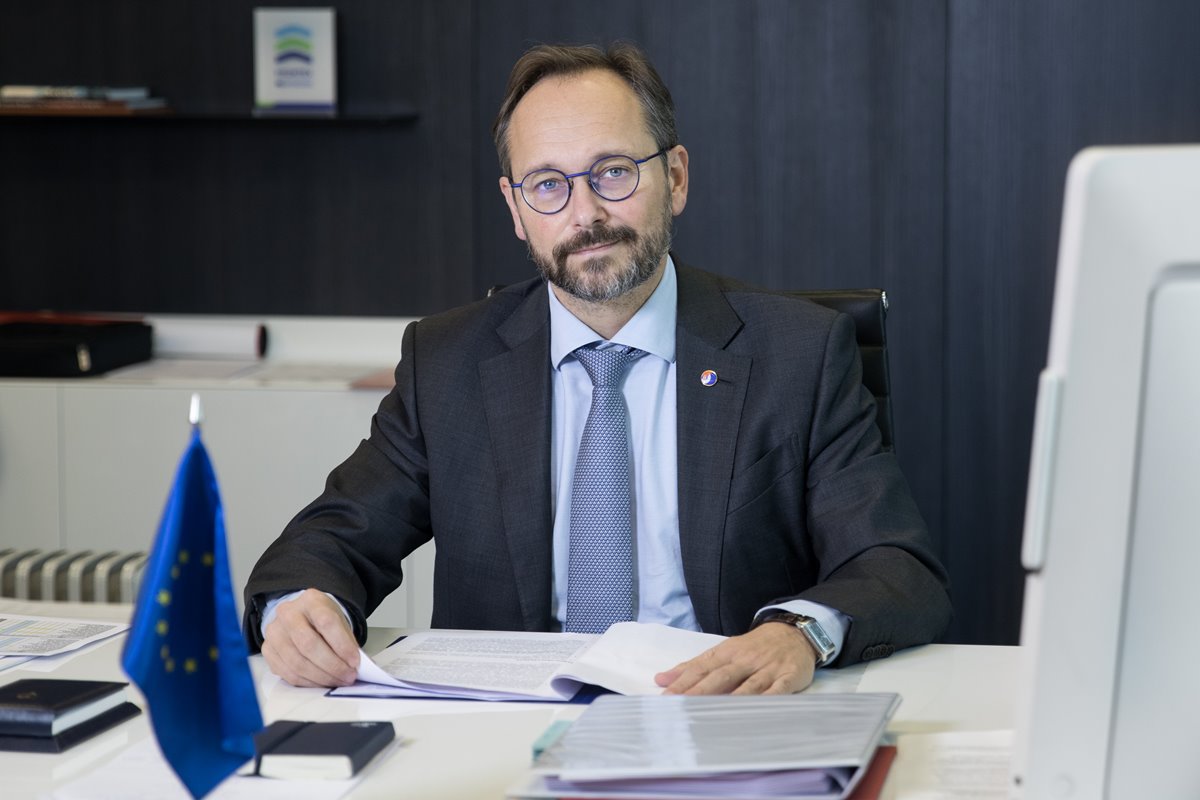
So what the EU does to help Serbia?
The EU support Serbia accession process for environment and climate action in 3 main directions:
- Investments: EU invested so far more than 400 million euros in environmental protection, topped with 200 million euros from Serbia for a total of more than 600 million euros: water supply, waste water facilities, biodiversity protection, or solid waste. The EU has invested an additional 90 million euros in flood relief, flood protection and disaster risk reduction.
EU funding is important and quality of EU expertise is key. We need also:
2. Policy dialogue with Government, municipalities, civil society and
3. Investing in people and institutions to increase capacities at national and local level, build and align legislation with EU acquis.
For instance, the PLAC III project provides expert support to the Serbian negotiation structure in charge of carrying out the accession negotiations. The assistance is comprehensive and it has been provided, among others, through workshops, trainings study tours delivered within the framework of the Project.
The PLAC III provides a large number of working days to Chapter 27 – Environment and Climate Change (705 working days, more than one fifth of total number of 3,102 WDs).
The outputs that have been delivered so far by the Project reflected fully the intensive efforts of Serbia that brought about opening of the Cluster 4 (Green Agenda and Sustainable Connectivity) in December 2021.
The Project’s assistance is demand-driven and PLAC III experts (most of them coming from the EU Member States which provides opportunity to share best EU practices) work in close cooperation with the Ministry of Environmental Protection and the Negotiating Group for Chapter 27.
PLAC III supported Serbian demands in development of policies and legislation including among others:
- Delivery of regulatory impact assessment of the draft law on the environmental liability for compliance with Environmental Liability Directive 2004/35/EC;
- Delivery of ex-ante effects analysis conducted in the area of circular economy, which will serve as a starter document in the determination process of relevant public policy so Serbia could achieve the goals set in the EU Circular Economy Action Plan;
- Drafting regulation on interoperability of data sets and services of the National Spatial Data Infrastructure to align with the INSPIRE Directive;
- Drafting by-laws implementing new Law on Climate Change to align Serbia with the EU requirements re. monitoring, reporting and verification of greenhouse gas emissions as a precondition for phasing in CO2 emitters in the EU ETS;
- Delivering policy impact and legal gap assessment reports and number of legal draft proposals to align waste management rules in force with Directive (EU) 2018/851 amending Waste Framework Directive and EU´s Circular Economy Package governing waste streams;
- Delivering the drinking water legislation compliant with the new Drinking Water Directive, etc.
More will come from PLAC III support, such as transposition of new EU requirements regarding extended producers’ responsibility, end-of-waste status and single plastic use, implementing municipal waste management plans in compliance with the revised Union waste management acquis and alignment with the EU rules governing CO2 capturing and storage.
Stay tuned!

